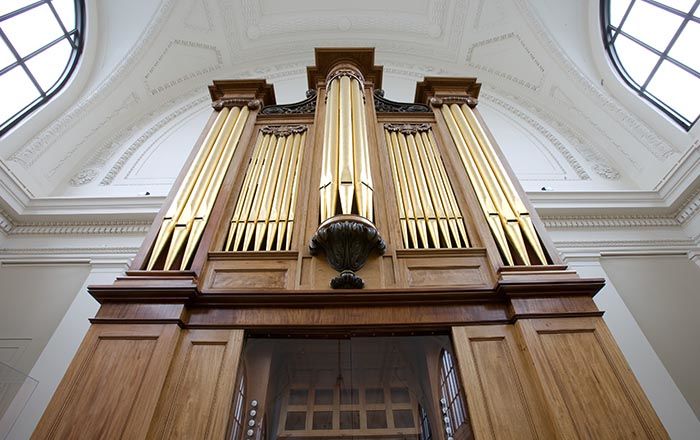Clarinet in C
Richard Bilton British
Not on view
Richard Bilton claimed himself ‘late apprentice and foreman to Cramer’ and traded from 93 Westminster Bridge Road, London, between 1826 and 1856. (Waterhouse, NLI, 32)
Overall size: 583
Bore: c-hole 13.4; f-hole 13.6
Conical part: 106
Technical description: Boxwood with ivory ferrules and brass keywork. Six pieces: mouthpiece, barrel, upper section, middle section for the fingers of the right hand, lower section with keys, bell. Ebony, English socket type mouthpiece grooved for cord. English style tenon-type barrel. Speaker liner projects almost to the centre of the bore. Blocks pinned in order to prevent the wood from cracking. Levers for L4, tone-hole and key for R4 mounted in a bell-shaped swelling. Zig-zag F♯3/C♯5 lever guided in a block.
L0: T; speaker.
L1: T; throat A♮.
L2: T.
L3: T; E♭4/B♭5.
L4: E3/B♮4; F♯3/C♯5.
R1: T; trill key for throat A-B♮.
R2: T; B♮3/F♯5.
R3: T.
R4: T; G♯3/E♭5.
Keyhead type: flat round
Keymount type: rudiments of turned wooden rings, blocks, swelling.
Inscribed on all pieces except for unstamped mouthpiece: "BILTON / LONDON" / unicorn head; on bell also "93 WESTMINSTER / BRIDGE ROAD"
Playing accessories: one reed and a cord (not original).
(Heike Fricke, 2014)
This image cannot be enlarged, viewed at full screen, or downloaded.
This artwork is meant to be viewed from right to left. Scroll left to view more.
.jpg)

.jpg)
